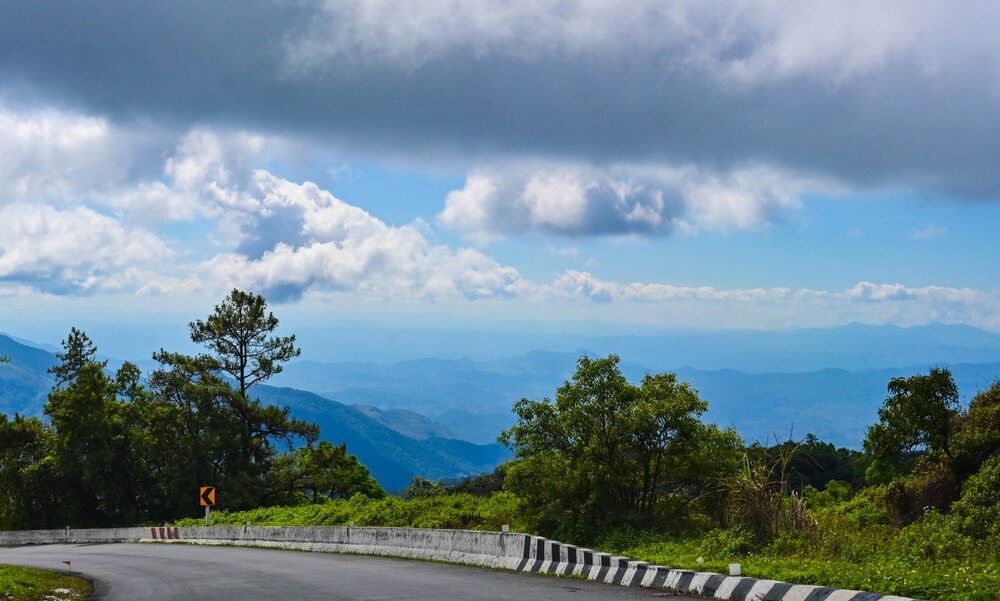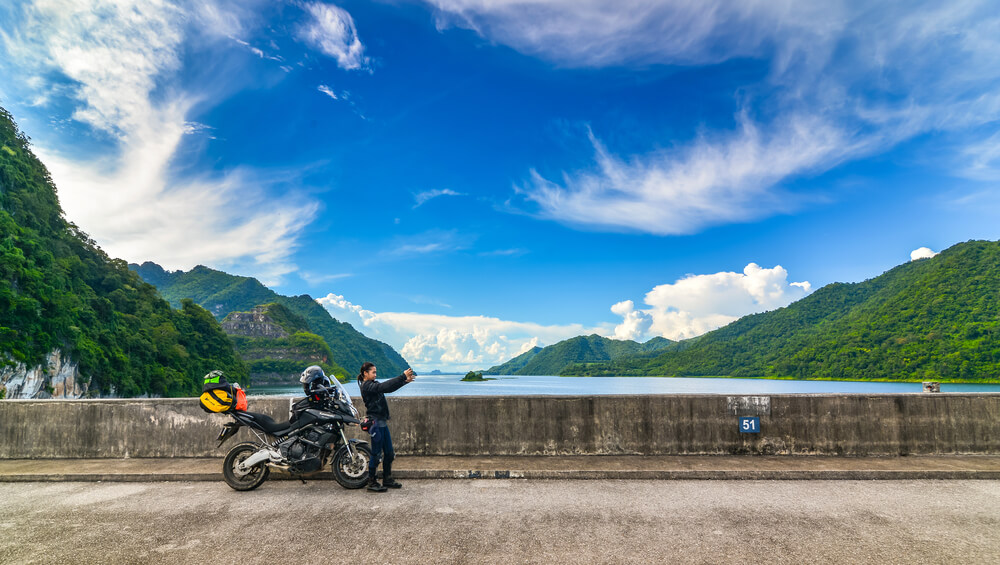Planning a long trip by car in Thailand can feel confusing. Many travellers worry about road safety, different traffic laws, and which documents to carry. Getting lost or facing car trouble far from help is also a big concern.
Thailand uses left-side driving and has its own road rules. Many roads may look different from what you know. You will need special permits and to understand local signs. These facts catch many visitors off guard.
This guide covers the basics of long distance driving in Thailand. You will learn which licence you need, what to check on your car, and how to follow Thai road safety rules. Read on for simple steps that will help you stay safe and enjoy your journey.
Driving in Thailand: Key Requirements
Safe long-distance driving in Thailand starts with the right documents and a good understanding of local traffic laws. Check what you need before your trip to avoid legal trouble and stay safe on the road.
What licences do I need to drive in Thailand?
Tourists must have an International Driving Permit, also called an IDP, along with a valid home country licence. Thai law requires both documents for car rentals and insurance claims.
Only persons aged 18 or older can drive in Thailand. Drivers who stay longer than three months should get a Thai driving licence from the Department of Land Transport.
Car hire companies often check your IDP before you take the vehicle. Police officers may stop drivers to inspect licences, especially near tourist destinations or during road safety checks.
Always carry your original passport with your driving permits while travelling on Thailand’s roads to avoid fines.
What should I know before renting a car in Thailand?
Check if you hold a valid driving licence from your home country and an International Driving Permit. Drivers must be at least 21 years old for most car rental companies in Thailand.
Some companies may ask for a passport and a credit card for the deposit. Review the insurance coverage before signing. Full insurance is best for longdistance travel. Inspect the vehicle for scratches, tyre wear, or low fluid levels and take photos for proof.
Most rental cars are automatic, but manual options may need a special request.
Road safety depends on the car’s condition and company policies. Many roads use speed cameras and police checks for traffic laws. “Seat belts must be worn at all times by law in Thailand,” said the Thai Department of Land Transport.
Petrol stations can be scarce in rural areas. Plan refuelling stops on your route. Car rentals often have restrictions on cross-border travel and night driving. Next, check the steps for vehicle inspection before long drives.
Preparing for Long-Distance Drives
Check your vehicle before a long trip. Look at the tyres, brakes, and lights to ensure they are working well.
How do I perform a thorough vehicle inspection before a long drive?
Performing a vehicle inspection is essential before any long drive. It ensures your safety and helps avoid breakdowns on the road.
- Inspect the tyres for air pressure, tread depth, and signs of wear. Proper inflation prevents flats and improves fuel efficiency.
- Check all fluid levels, including engine oil, coolant, brake fluid, and windscreen washer fluid. Keeping these fluids topped up aids in smooth vehicle operation.
- Test the brakes by pressing down on the pedal while stationary. The brakes should respond promptly without any strange noises or vibrations.
- Examine the lights, including headlights, tail lights, indicators, and hazard lights. All lights must work properly to ensure visibility and safety on the road at night.
- Open the bonnet to look for loose belts or hoses that may need replacement. Properly secured parts are essential for reliable performance during long journeys.
- Ensure that seat belts function correctly and are free of damage. Seat belts should retract smoothly when pulled.
- Verify that your spare tyre is in good condition and fully inflated; this will assist you in case of an emergency flat tyre situation.
- Confirm that your first aid kit is complete and easily accessible; it provides essential supplies during emergencies.
- Adjust mirrors for maximum visibility and ensure they are clean; this helps with better navigation around other vehicles.
A thorough vehicle inspection can make a significant difference while driving long distances in Thailand’s diverse terrain and climate conditions ahead lie traversing Thailand’s roads.
What essential safety gear and supplies should I carry?
Carrying the right safety gear and supplies is important for long-distance driving in Thailand. These items can help keep you safe on the road.
- A spare tyre ensures you can replace a flat quickly and continue your journey.
- A first aid kit should include plasters, antiseptic wipes, and pain relief. This helps treat minor injuries.
- A fire extinguisher is vital for emergencies, especially if there’s a vehicle fire.
- Jump leads are useful if your battery dies; they can help restart your vehicle.
- Basic tools like a spanner and screwdriver assist with minor repairs during a trip.
- Reflective triangles or flares alert other drivers if you have to stop unexpectedly.
- A torch provides light during roadside emergencies, especially at night.
- Water and snacks keep you hydrated and energised on long drives.
- Maps or a sat nav help guide your route when mobile service may be weak.
- Seat belts must always be worn by all passengers; they are crucial for safety.
These items support safe long-distance travel while exploring Thailand’s beautiful roads.

Navigating Thailand’s Roads
Driving in Thailand can be different from what you know. Road signs might be new, and driving is on the left side.
How do I understand road signs and drive on the left side?
Road signs in Thailand follow international standards. Look for clear symbols and colour codes. Red usually means warning, while green indicates directions. Familiarise yourself with common signs before driving.
Drive on the left side of the road in Thailand. Keep your vehicle as close to the curb as possible. Watch out for larger vehicles that may take up more space. Adjust your mirrors to ensure you have a good view of what’s behind you.
Stay alert, especially at intersections and roundabouts where traffic can be busy.
What common hazards should I watch for on rural roads?
Driving rural roads in Thailand can be a challenge. Watch for animals on the road. Cows, dogs, or even monkeys might cross your path unexpectedly.
Potholes are common hazards that can damage your vehicle. Watch out for loose gravel and debris too, as it may cause you to lose control. Stay alert for slow-moving vehicles and cyclists.
They often share the road with cars. Keep an eye out for sudden changes in weather; rain can make roads slick and dangerous. Always drive cautiously to ensure safety while traversing these routes.
Tips for Safe Long-Distance Driving
Driving at night can be risky in Thailand. It’s best to plan your trips during daylight hours for better visibility and safety. Always follow speed limits and local traffic laws.
Staying within the rules keeps you safe on the road.
Why should I avoid driving at night in Thailand?
Driving at night in Thailand poses several dangers. Visibility is often poor, which makes it hard to see road signs and obstacles. Animals can wander onto roads, especially in rural areas.
Drivers might also be tired after a long day of travel, increasing the chance of accidents.
Local drivers may not follow traffic rules closely at night. They sometimes speed or drive aggressively without using headlights properly. This adds to the risk for those new to the country’s driving culture.
Avoiding night drives will help you stay safer on your trip through Thailand’s beautiful roads.
How can I ensure I follow speed limits and traffic laws?
Observe speed limits carefully. Speed limits are marked on signs along the road. Always check your surroundings for these signs, especially in urban areas and near schools. In Thailand, the general speed limit is 90 km/h on highways and 60 km/h in cities unless stated otherwise.
Traffic laws must be respected to ensure safety. Follow all rules about seat belts, lanes, and stopping at red lights. Use your indicators when changing lanes or turning. Be aware of local driving culture; it can differ from what you may be used to back home.
Understanding the rules will make long-distance driving smoother as you enjoy Thailand’s beautiful landscapes.
Alternatives to Driving
Hiring a private driver can be a smart choice for longer trips. Public transport options, like buses and trains, also make travel easy in Thailand.
When should I consider hiring a private driver?
Consider hiring a private driver if you are not comfortable driving in Thailand. The roads can be busy and confusing, especially for new drivers. A local driver knows the best routes and traffic rules.
This can make your trip safer and less stressful.
Hiring a private driver is also wise for long distances. You can relax and enjoy the scenery without worrying about navigation or fatigue. If you plan to drink during your visit, using a driver keeps you safe and within legal limits.
Public transport is another option but may not reach remote attractions easily.
What are the best public transport or tour options in Thailand?
Public transport options in Thailand are varied and convenient. Tour packages offer a great way to explore the country.
- Buses: Buses connect cities and towns across Thailand. They are affordable and run regularly. VIP buses have comfortable seats and air conditioning.
- Trains: Train travel is scenic and enjoyable. The State Railway of Thailand has routes to many popular destinations. Overnight trains provide sleeping berths for long journeys.
- Tuk-tuks: Tuk-tuks are a fun way to get around within cities. They are small, three-wheeled vehicles perfect for short trips.
- Songthaews: These shared taxis serve as local transport in towns and cities. They follow fixed routes with set fares, making them cheap and easy to use.
- Boats: In places like Bangkok, boats offer a unique travel option on rivers and canals. Ferry services help avoid traffic jams while providing beautiful views.
- Private Tours: Many companies offer guided tours across Thailand’s attractions. These tours often include transportation, meals, and expert guides for a hassle-free experience.
- Ride-hailing Apps: Services like Grab make getting around easy in major cities. You can book rides directly through your smartphone, providing comfort and convenience.
- Airport Transfers: Many hotels offer transfer services from airports to accommodations. This option saves time and ensures you arrive safely at your destination.
Long Distance Driving In Thailand
Driving long distances in Thailand can be safe and enjoyable. Follow the tips shared in this guide. Carry necessary safety gear and know traffic rules. Check your vehicle before every trip to avoid problems on the road.
Consider hiring a driver if you feel uncertain about driving yourself. Being prepared makes your journey smoother and more enjoyable. Explore Thailand’s beauty with confidence!
SPS Car Hire Pattaya is the perfect place to rent a car for your Thailand roadtrips. Please click on the button below to see our rental cars for your trip.


